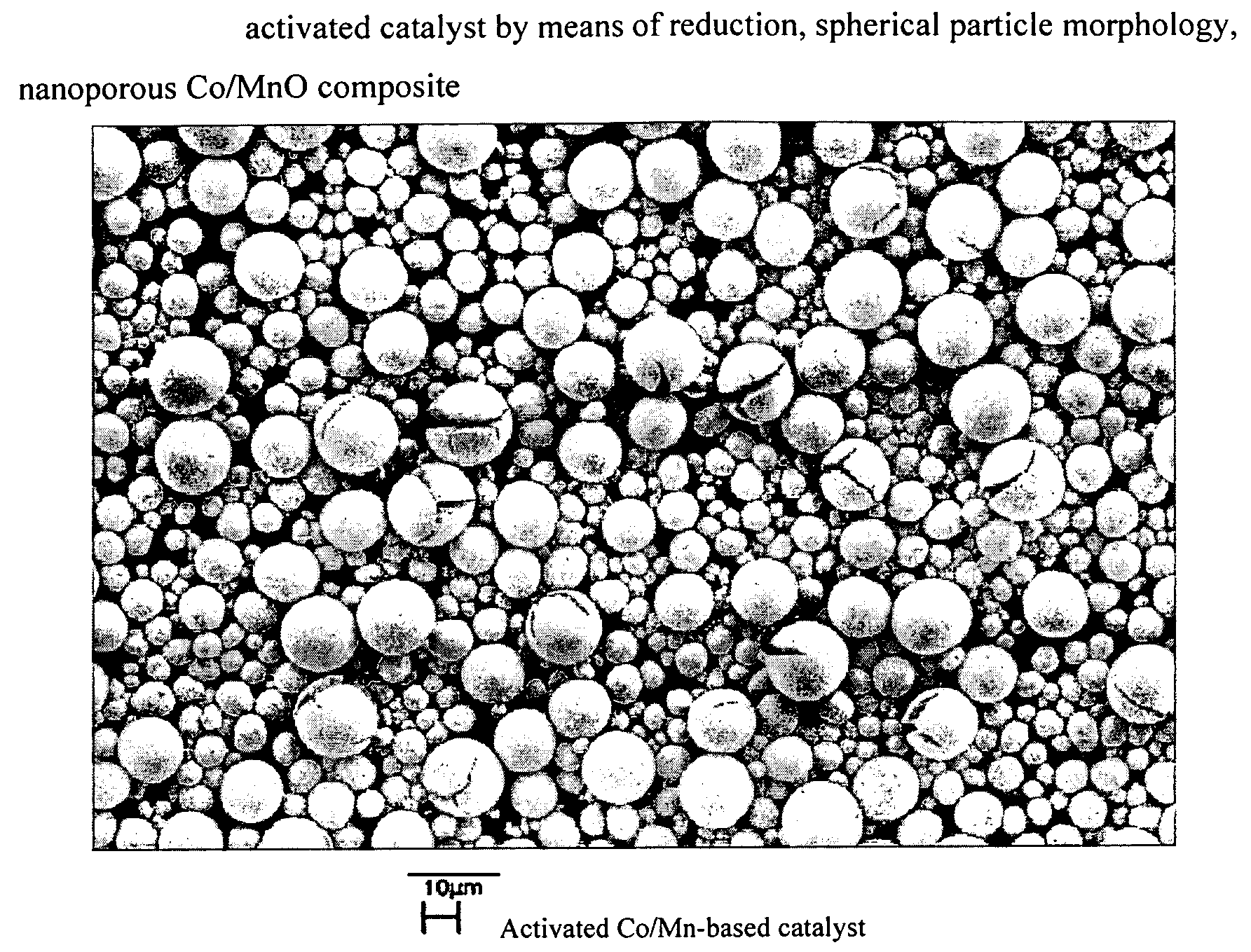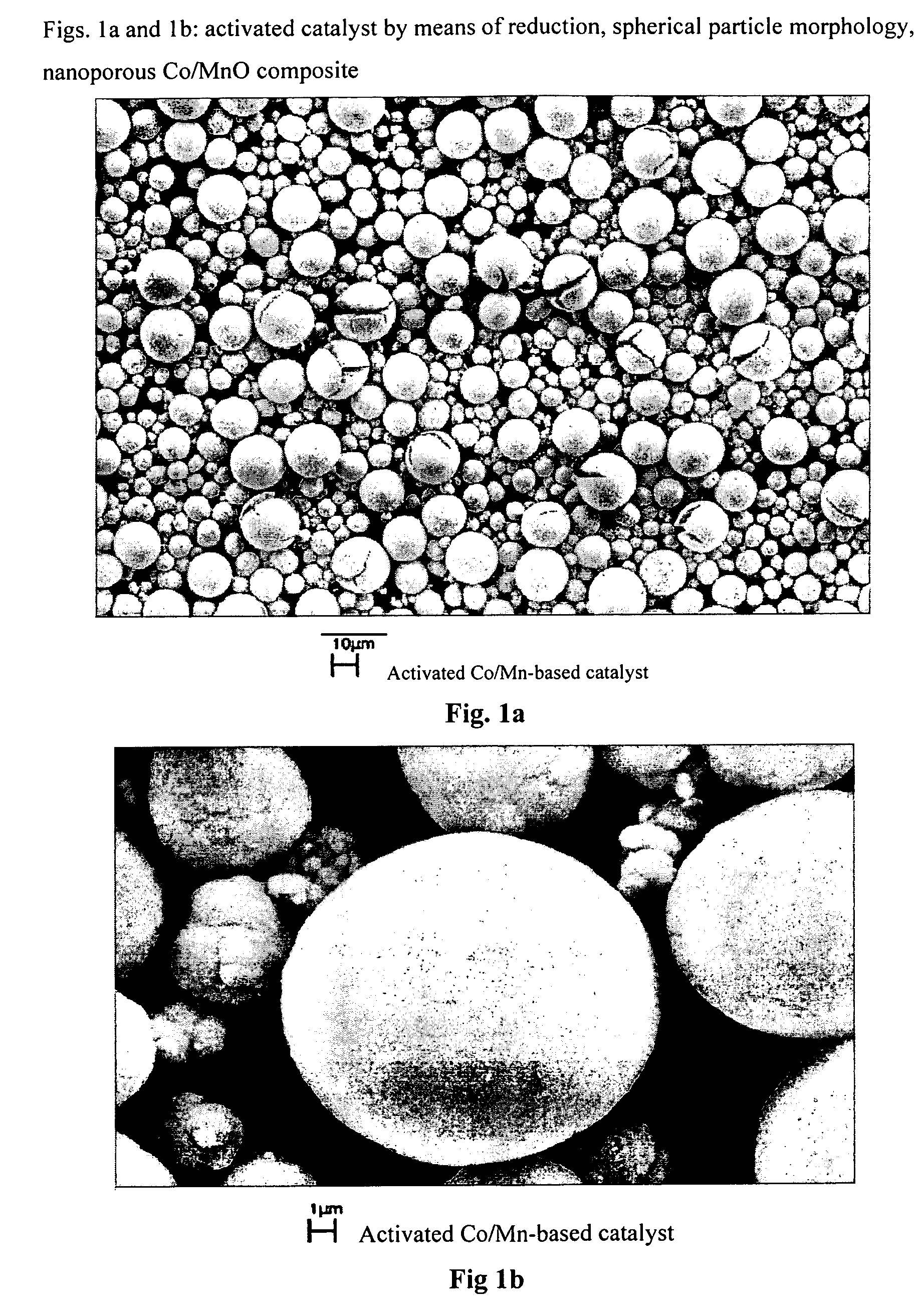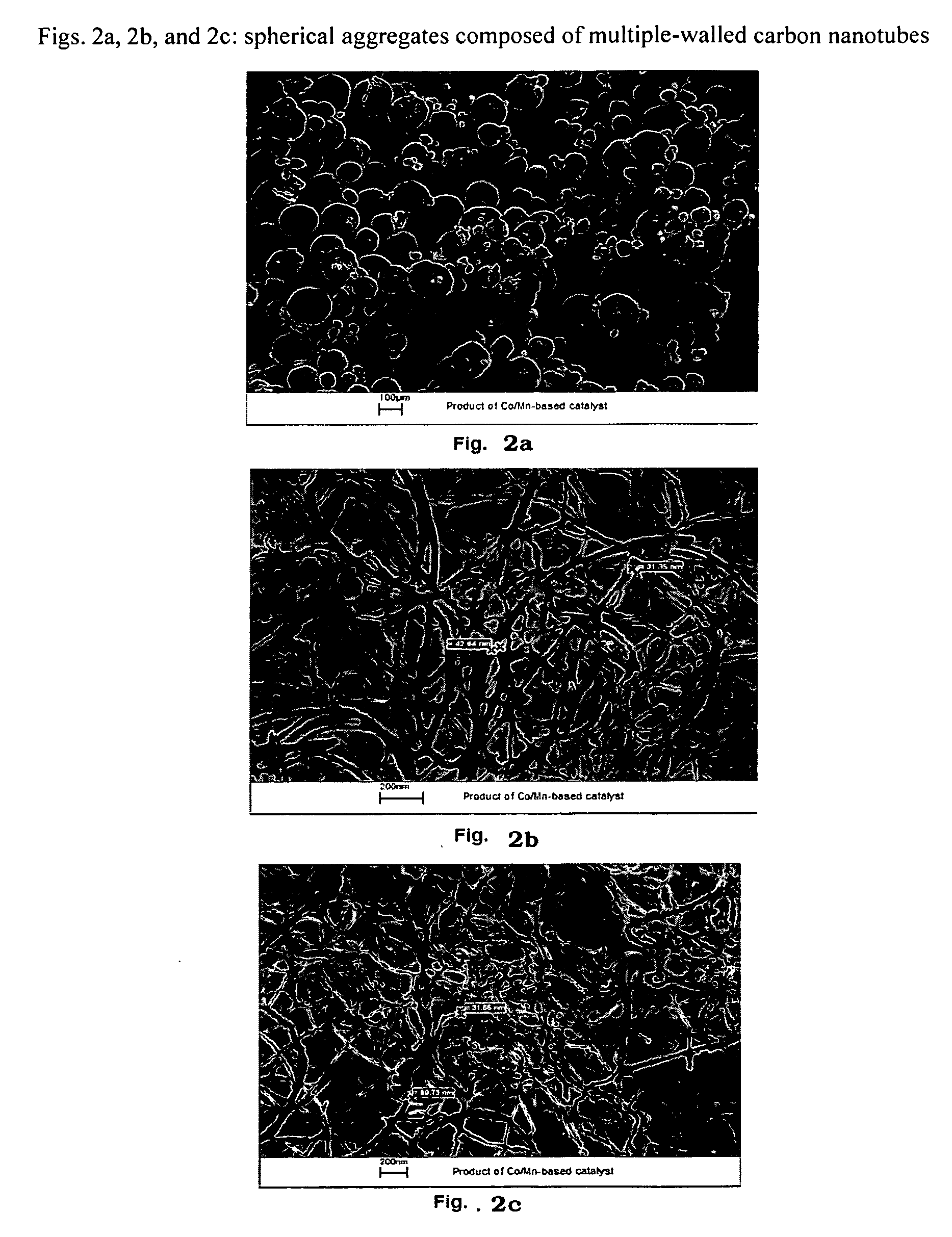Nanoporous Catalyst Particles, the Production Thereof and Their Use
a technology of nanoparticles and catalyst particles, which is applied in the direction of catalyst activation/preparation, physical/chemical process catalysts, metal/metal-oxide/metal-hydroxide catalysts, etc., can solve the problems of low controllability of microporosity and nanoporosity within the individual particles, and is not as stable as grown structures
- Summary
- Abstract
- Description
- Claims
- Application Information
AI Technical Summary
Benefits of technology
Problems solved by technology
Method used
Image
Examples
example 1
Manufacture of a Co / Mn-Based Catalyst and its use for the Manufacture of Spherical Aggregates Composed of Multiple-Walled Carbon Nanotubes
Manufacture of the Catalyst
[0045]The catalyst is manufactured through continuous combining of three educt solutions.
[0046]Solution I:[0047]3050 ml of a solution of 1172.28 g (NH4)2CO3 (stoichiometric) in demineralized water
[0048]Solution II:[0049]3130 ml of a solution of 960.4 g Co(NO3)2*6 H20 and 828.3 g Mn(NO3)2*4 H2O
[0050]Solution III:[0051]960 ml of a 10.46 mole ammonia solution
[0052]The individual solutions are simultaneously metered into a 1-liter reactor at a constant metering speed over a period of 24 h; this reactor permits an intensive, thorough mixing and is equipped with an overflow via which product suspension is continuously discharged. The precipitation reaction occurs at 50° C. After the first 20 h, the discharging of the product via the overflow is begun. The suspension has a deep blue-violet color. The solid is separated from the...
example 2
Manufacture of Multiple-Walled Carbon Nanotube Aggregates by means of a (Co,Mn)CO3 Catalyst
[0058]A catalyst according to example 1 is used without prior activation, directly for the manufacture of multiple-walled carbon nanotubes. The transformation into multiple-walled carbon nanotubes occurs as in example 1, without a prior reduction step. The product demonstrates a uniform distribution in the thickness of the nanotubes, as is clear from the REM images in FIGS. 5a, 5b, and 5c.
[0059]The TEM images in FIGS. 6a and 6b verify the presence of multiple-walled carbon nanotubes.
example 3
Manufacture of Multiple-Walled Carbon Nanotube Aggregates with Narrow Particle Distribution by means of a (Co,Mn)CO3 Catalyst
[0060]A catalyst according to example 1 is classed according to size by means of sieving and a particle size fraction of 20 μm-32 μm is used without prior activation, directly as a catalyst. FIGS. 7a and 7b show REM images of the catalyst sieve fraction used.
[0061]The transformation into multiple-walled carbon nanotubes takes place as in example 1.
[0062]This yields spherical aggregates composed of multiple-walled nanotubes with a narrow particle size distribution. With comparable transformation conditions, this makes it possible to adjust the size of the spherical carbon nanotube aggregates by means of the size of the catalyst particles. REM images of the product are shown at various magnifications in FIGS. 8a, 8b, 8c, and 8d.
[0063]The TEM images in FIGS. 9a and 9b confirm the presence of multiple-walled carbon nanotubes.
PUM
| Property | Measurement | Unit |
|---|---|---|
| temperatures | aaaaa | aaaaa |
| temperatures | aaaaa | aaaaa |
| temperatures | aaaaa | aaaaa |
Abstract
Description
Claims
Application Information
 Login to View More
Login to View More - R&D
- Intellectual Property
- Life Sciences
- Materials
- Tech Scout
- Unparalleled Data Quality
- Higher Quality Content
- 60% Fewer Hallucinations
Browse by: Latest US Patents, China's latest patents, Technical Efficacy Thesaurus, Application Domain, Technology Topic, Popular Technical Reports.
© 2025 PatSnap. All rights reserved.Legal|Privacy policy|Modern Slavery Act Transparency Statement|Sitemap|About US| Contact US: help@patsnap.com



